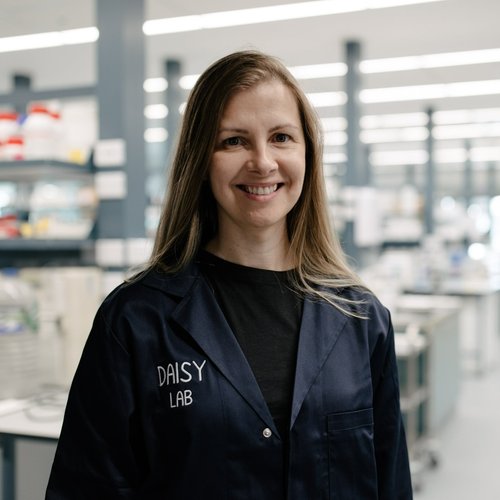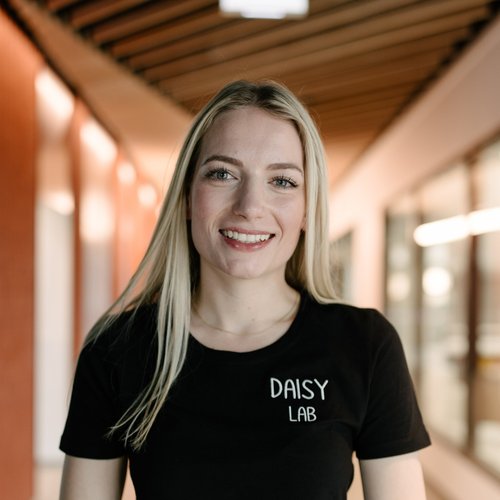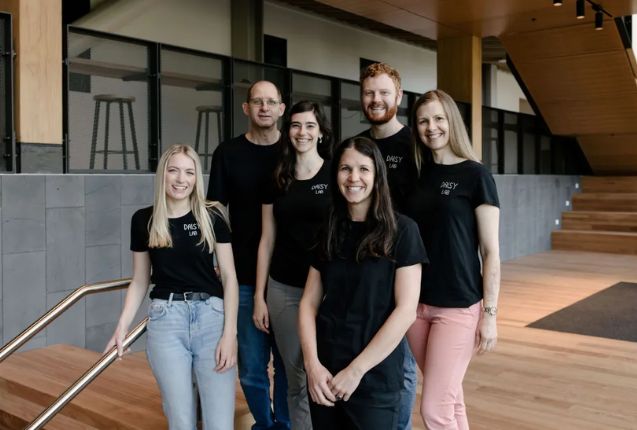By Jonathan Seidman
New Zealand precision fermentation firm Daisy Lab recently announced a scaling milestone: successfully manufacturing animal-identical whey proteins in 10 L fermenters.
Founded by Irina Miller, Dr. Nikki Freed, and Emily McIsaac, the fully female-led company says its working to reshape the dairy industry in NZ.
Future Alternative talked to Miller about what led her to kickstart the precision fermentation sector in NZ and how Daisy Lab established an end-to-end production process for its product.
Most of your background seems to be in business consulting. How did you pivot to the founder of a precision fermentation company?
Daisy Lab started as a sort of a social hobby project, more out of frustration than the desire to make a lot of money. I’ve always been interested in science and I understood the technology of precision fermentation. My only connection to actual food technology was that I was vegan and a hobby cheesemaker. So I knew a few things about how cheese was made, not on an industrial scale, but traditionally. And it fascinated me.
I had a short stint at Fonterra, which is New Zealand’s largest company and one of the largest global dairy manufacturers. And I realized that the business model for New Zealand and for Fonterra is just powderized ingredients. And often the more clean and isolated those ingredients are, particularly proteins, the more valuable they are. They become nameless ingredients and nobody knows that the dairy or milk protein powder that we ship all over the world comes from a clean, green New Zealand pasture. People just know that it’s a good protein that’s been purified to a very high standard. And it just did not make sense to me.

My time at Fonterra was a pivotal moment for me personally, when a lot of things sunk in about animal agriculture. Once I connected the facts, it was really hard for me to disconnect them.
I thought that precision fermentation was an absolute no-brainer and that sooner or later our food will be made using precision fermentation. So at that stage – around 2017 – I thought I would just wait because I’m not a scientist, and that somebody would absolutely start something like that and then I’d join the movement later on.
It was really frustrating to see that nothing was happening in New Zealand for quite a few subsequent years. I couldn’t really understand why then, and I still don’t now. The country is really reliant on dairy. It’s a big part of our GDP. There’s a lot of farmers working in dairy. But there are very few conversations, if any, around ‘What does the future look like?’.And that didn’t sit well with me at all.
That’s when I thought if it’s not happening, maybe we should start something ourselves, bootstrap it so that it’s here on the ground and not somewhere far away in a futuristic Silicon Valley – rather, this technology can actually be done here. I hoped that was going to help the conversation with our dairy industry and with the farming community.
How did you connect with Nikki and Emily?
When I started I knew that obviously I couldn’t do it myself and needed a scientific partner. I found Nikki through the grapevine. We had a coffee and then just sort of clicked. And it didn’t seem like a lot of investment from either side.
We put our heads together and saw the easiest and cheapest way to get [this venture] off the ground was to get a student. So we advertised for either a Master’s or PhD student, and that’s how we found Emily.
Emily really liked the idea and was happy to jump into it, and we agreed to cover her Masters studies fees. It all started growing from there.

The first year, it was just Emily in the lab doing one project, one organism. That’s not really how it’s done in science, but she was a student. She had other papers to do, other assignments to write. But in the meantime, while she was doing that, Nikki and I talked more and more. And it started shaping up into a start-up and a proper business.
People presented it as almost an impossible thing to be doing in New Zealand. So we spoke to our environmental protection authority and Food Standards Australia New Zealand (FSANZ). They told us that there was a path. It may be harder than in other places in the world, but not impossible. So we decided to give it a go.
When did you begin fundraising, and what areas did the funds initially go to?
We got approval to do all the genetic modifications on our own under the Daisy Lab umbrella, which was not easy considering New Zealand has an even stricter environmental protection code than Australia. Then we started getting interest from investors.
People started seeking us out. We got our first SAFE (Simple Agreement for Future Equity) note early 2022, and that’s when we hired our first two full time scientists. Nikki and I remained unpaid. And Emily – who became a co-founder – also remained unpaid while she was finishing her Masters. That’s when research really ramped up.
Within around six months from then, we had our first couple of strains expressing lactoglobulin. Emily – who came on board as a full time employee that year – meanwhile, was successful with expressing casein.
We started raising our seed round at the end of 2022 and we closed it in early 2023. Our seed round was dedicated to scaling the beta lactoglobulin from the lead bench from the deep well pipe to the fermenters.
The initial business plan was to not acquire capital but rather rely on external partners in process development and contract manufacturing. But we quickly pivoted from this approach because we thought it was going to be too expensive and too slow.
We were really lucky to be able to acquire two fermenters out of Auckland University. They weren’t originally operational and our fermentation scientists fixed them. We had hired two of our scientists as molecular biologists without any consideration for the subsequent fermentation process. We scaled our process last year from half a gram to over 10 grams per liter yield in a pretty consistent process. We’re quite happy with how that turned out for us.
Australia is a lot more active than New Zealand in precision fermentation. Do you see Australia as a competitor or do you consider yourselves part of the same whole, especially as you’re reporting to the same regulator?
It’s interesting, right? I think Australia is a competitor for funding. But the market is so huge that I think that there’s plenty of room for multiple precision fermentation companies to play in. We are quite friendly with companies like All G Foods and Eden Brew.
We’re probably all in the same boat at the end of the day. Only the technology will go on a slightly different path. We take a different focus in our position on how we want to bring it to market.
Regarding competition with Australia, it’s probably too early to say. We might become competitors later on and we probably are competing for capital. But I wouldn’t view us as traditional competitors in the sense of Coca Cola and Pepsi.
Congrats on your recent scaling milestone. Quite a few companies have recently announced partnerships with biotech firms to address the scaling issue. Is this something that you plan to do in the future?
Possibly. But we might take a slightly different approach. In terms of scaling for regulatory approval, that would be our next milestone. We want to scale up to 1000 liters. Ideally, if we can raise enough money, we want to do it with our own capital. We know how, and we already have it all priced up. We know how to build the fermenter. We know how to build the downstream processing from that.
If that is not possible, then yes, we could consider partner manufacturing. Probably not with biotech companies, but with industrial equipment providers for dairy manufacturing.

Our thinking is that fermenters are important in the value chain, right? So it’s important to ferment the liquid. But essentially, the downstream processing is that protein purification. That is the largest capital expenditure, but it is also the most expensive in the process of production of the protein.
What we see is that the downstream processing can be done using traditional dairy processing equipment. That includes ultra filtration, microfiltration, and then subsequent spray drying and evaporation.
The way we design our expression system in the process of fermentation is so that the liquid that we’re getting is suited for this process. We are essentially using the equipment that’s already been developed and is cheaper than biotech equipment. And in many cases, the equipment is already installed on the ground as in a dairy factory.
To answer your question, we do want to partner with other companies. But our main focus would be the existing dairy companies, globally. We already have a NZ dairy company as a small investor.



